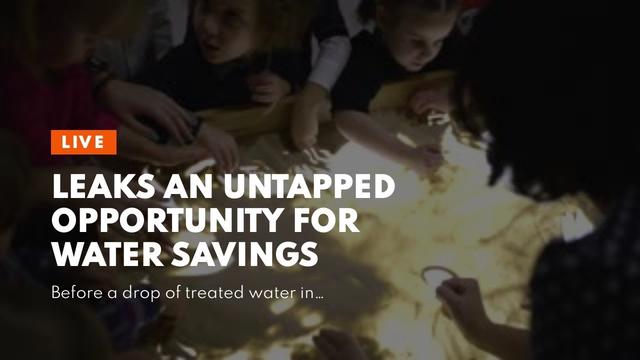Before a dropof treated water in California ever reaches a consumer’s faucet, about 8percent of it has already been wasted due to leaks in the delivery system.Nationally, the waste is even higher, at 17 percent. This represents anuntapped opportunity for water savings, according to a study from theUniversity of California, Davis.
The study,published in the journal Environmental Research Letters, is the firstlarge-scale assessment of utility-level water loss in the United States. Itfound that leak reduction by utilities can be the most cost-effective tool inan urban water manager’s toolkit, provided utility-specific approaches areused.
“When I firstheard about ‘leaks’ I thought it sounded boring, but leaks are a huge componentof our water systems and have a larger opportunity than many other water-savingmethods to make an impact,” said lead author Amanda Rupiper, a postdoctoralscholar with the UC Davis Center for Water-Energy Efficiency. “As the firststate to regulate its water losses, a lot of eyes are watching California, andthis is an opportunity to impact policy here and elsewhere.”
Amid amultiyear drought, the passage of Senate Bill 555 in 2015 made California thefirst in the nation and among the first in the world to require water utilitiesto regulate their water losses.

Using datafrom more than 800 utilities across Calif., Ga., Tenn., and Texas, the authorscharacterized water losses across the country. They developed a model to assessthe economically efficient level of losses and used that model to comparevarious water loss regulations and modeling approaches.
The studyfound that one-size-fits-all approaches to leak management are not effective,economical or equitable for utilities, which vary in size and resources.Uniform approaches could lead to the mismanagement of urban water losses.However, applying utility-specific performance standards can deliver a similaramount of water savings at a profit for both utilities and society.
“Regulationsthat impose a uniform standard across all utilities will result in waterreductions that are too stringent in some cases, too relaxed in others, and toocostly overall,” the paper concludes.
Ideally, noleaks would occur in a system. However, while some leaks are obvious andaccessible, others can be harder and more cost-prohibitive for some utilitiesto find and repair. The authors’ model assessed when utilities could save themost water for their dollar to find and fix leaks in the system.
They foundthat for the median utility, it is economically efficient to reduce waterlosses by 34.7 percent, or 100 acre-feet per year. The median cost of watersavings from leak management is $277 per acre-foot — cheaper than mosttraditional water management tools, including conservation campaigns and rebateprograms.
“It’scost-competitive to do this and should be part of the profile of how we manageour water,” Rupiper said. “We tend to think of leaks as being a little drip,but leaks are not inconsequential. Drips add up to big flows, and we can’tignore them anymore.”









